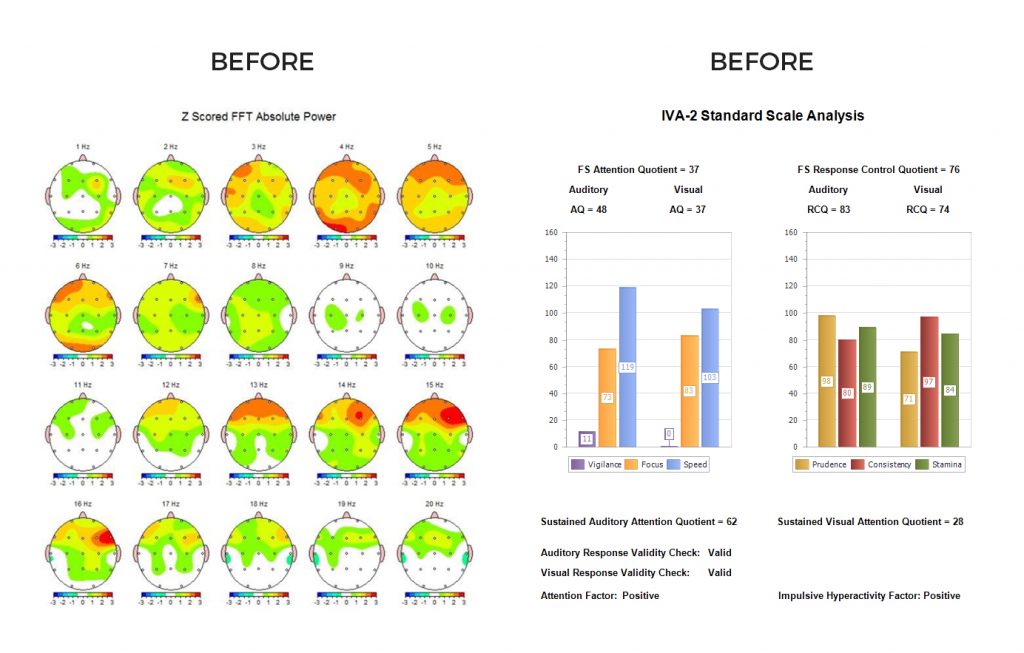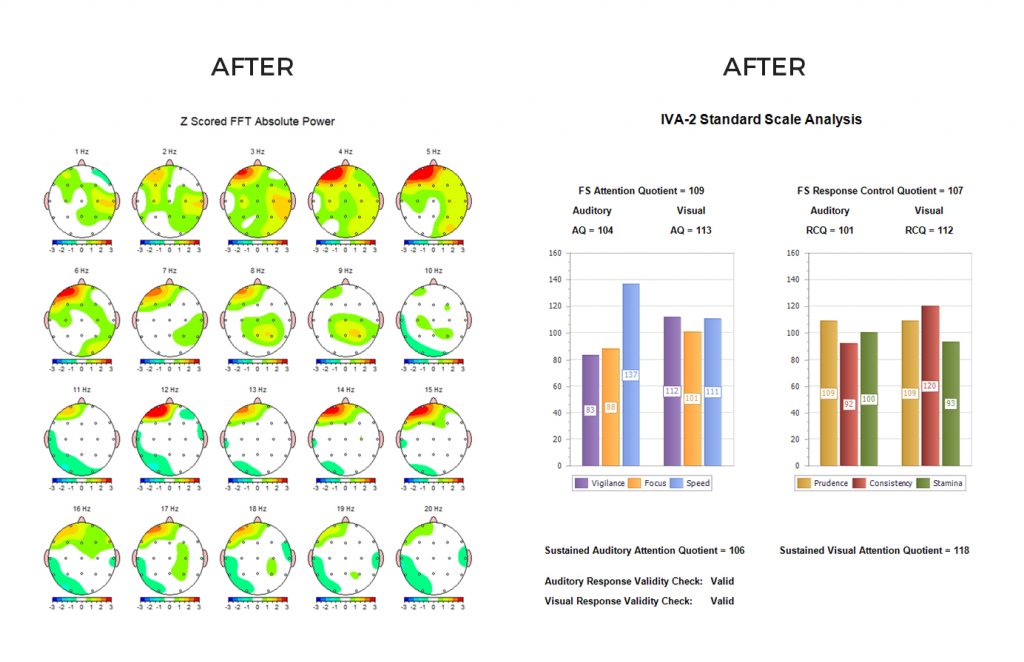Neurofeedback Patient #1
Conveniently located to serve the areas of Santa Monica, Venice, South Bay, Brentwood, Beverly Hills, Pasadena and all of Greater Los Angeles
Neurofeedback training to successfully treat attention deficits, poor executive function, and lack of energy/lethargy
J is a 15-year-old boy who came to the center for testing and treatment because he was experiencing episodes of extreme lethargy and feeling tired, as well as what he described as “fogginess” in his brain. These symptoms lead to difficulties with attention, thought organization, memory, and time management. This clinical picture was negatively impacting several aspects of his life including his academics, his social life, and his baseball.
As a student, J achieves above average grades. He is a very talented and accomplished athlete and a star baseball player. His mother was concerned about how overtired J seemed “all the time” and was worried that his grades and baseball would start to suffer. Based on parent report, J had to put in more effort than usual in order to maintain his grades and to continue his obligations to his baseball teams.
Initial testing was conducted using a Qeeg/Brain Map and psychometric testing which examined various cognitive abilities including, attention, processing skills, language skills, executive functions, and memory skills. The results of these tests were correlated to determine the exact underlying brain mechanisms that were impeding J’s daily functioning.
The initial brain map revealed difficulties with executive functions and attention due to elevated power in the low delta and theta frequencies. What this means is that when there is excessive slow activity, it reflects a problem of under-arousal in the brain. When under arousal occurs in these frontal regions of the brain that are responsible for executive processes, it can lead to slow processing, fatigue, difficulties with attention, and feelings of cognitive “fogginess.” This area is also responsible for movement and motor planning which explained some of the difficulties J experienced during baseball, which is movement oriented. The brain map also revealed too much power or overarousal in the frontal regions of the brain in low beta frequencies. This overarousal can lead to difficulties with cognitive processing and attention during higher level thinking tasks and when the brain has to process multiple pieces of information simultaneously.

The IVA-2 Standard Scale Analysis, which is a measure of attention that correlates highly with the Brain map, revealed a similar pattern of mixed levels of high and low arousal. J’s scores ranged from low average to more than two standard deviations below the mean, which is in the severely impaired range of performance.
The first phase of treatment consisted of a combined therapeutic approach which of neurofeedback sessions and an attention and memory based program called Cogmed. J’s therapy program was designed to target the areas identified in the brain map and the psychometric testing. Nineteen neurofeedback sessions, which ranged from 20-30 minutes in length, were conducted over an eight week period. The memory training was completed on average three times per week for approximately 15-20 mins.
A repeat brain map and IVA-2 were conducted at the end of the first phase of treatment, approximately two months after the initial testing. Results of the brain map demonstrated significant improvements in the overall balance of power in the brain with the most improvement noted in the high power beta production that was in the frontal areas of the brain. Some improvement was also noted with decreased low power in the frontal areas of the brain. The IVA-2 scores demonstrated an incredible 200% increase in J’s Full-Scale Attention score and a 40% increase in his Full-Scale Response Control score. These scores demonstrated that various elements of J’s attention system, such as focus, stamina, and speed improved significantly. His attention system shifted from one that was failing him to one that was above average and working efficiently to support other brain systems.

J reported feeling much more focused and engaged, less tired, and better able to maintain even levels of energy during the school day. He indicated that although he continued to experience some symptoms, he definitely felt better overall. His mother reported similar improvements in attention, organization, time management, and energy levels. She also indicated he was feeling less tired overall.
J continued through two more phases of treatment until the completion of his program in November. In total, he completed 47 sessions of combined neurofeedback and Cogmed. His final brain map demonstrated that his brain was clear of all deficits demonstrated in previous maps. He reportedly was feeling much less tired and was by all accounts, asymptomatic. His mother reported that he was doing great in school and managing a busy schedule without feeling exhausted. His attention and energy levels were reportedly better than ever, and the cognitive fog had disappeared.




